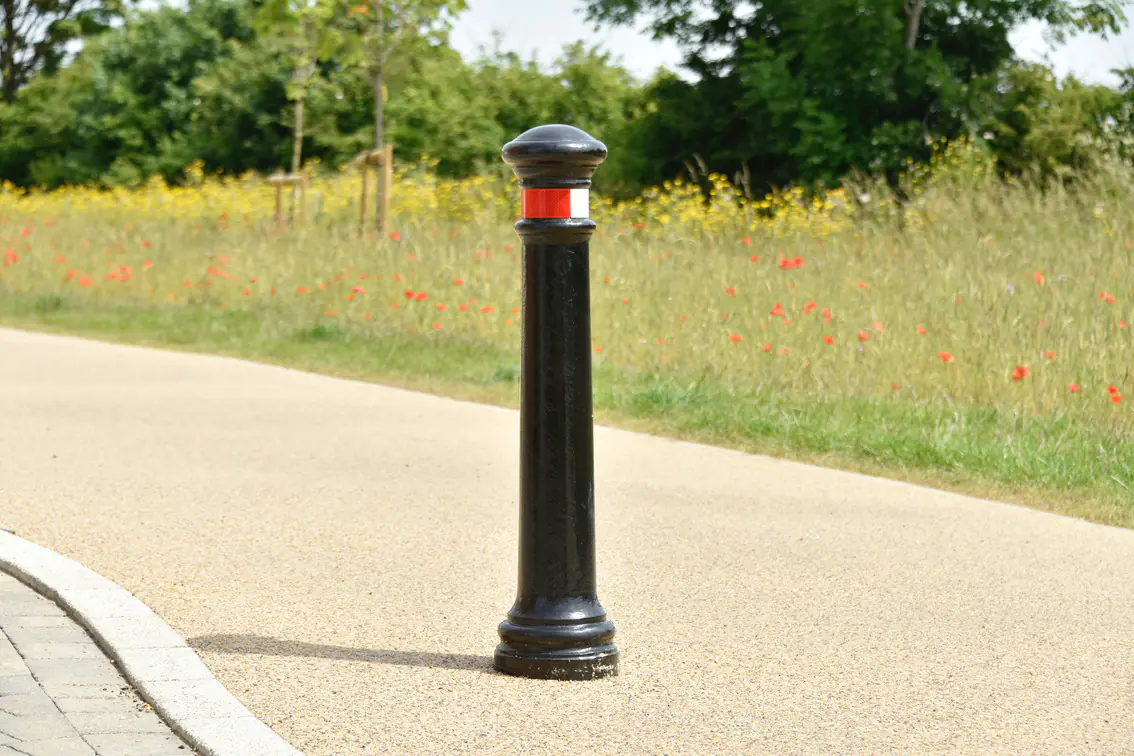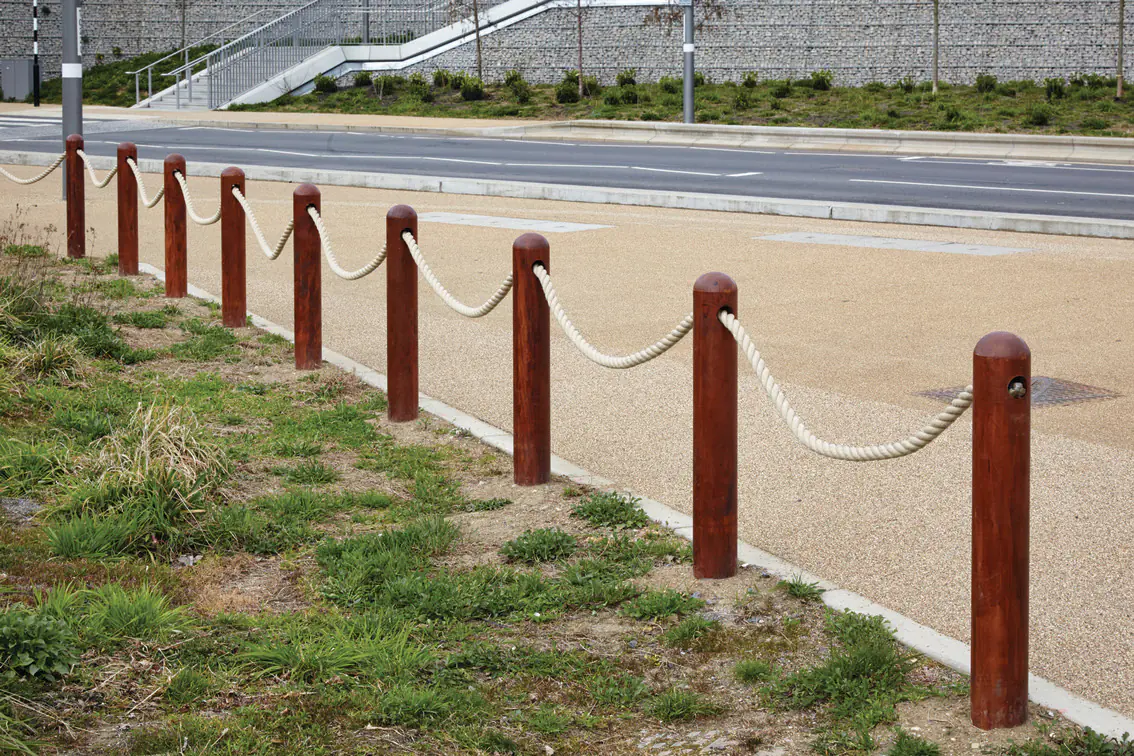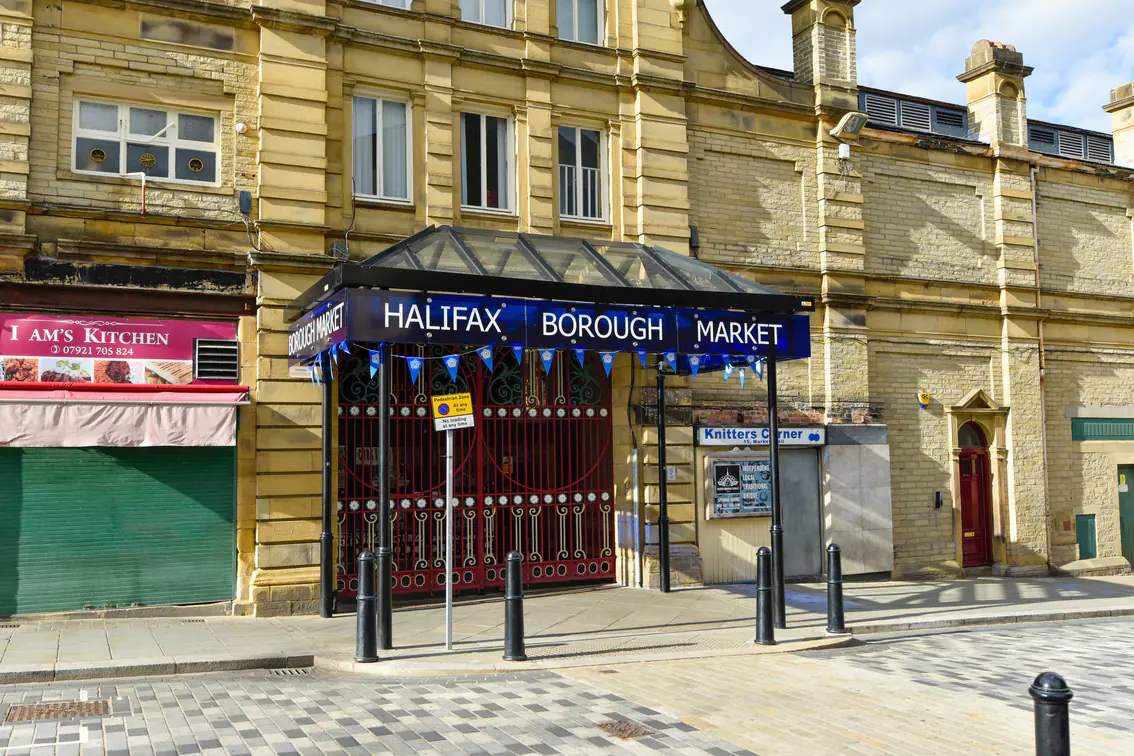Bollards Buyers Guide
Bollards play a crucial role in shaping how spaces function and feel. From protecting pedestrians and buildings to guiding vehicles and enhancing public spaces, bollards quietly handle some of the most important safety and design challenges in our built environments.
Choosing the right type, material, and installation method, however, isn’t always straightforward. With so many options, from heavy-duty security bollards to sleek architectural designs, it’s easy to get lost in the details. The right bollard for a city centre won’t necessarily suit a warehouse entrance or a retail car park.
That’s where this guide comes in. By the end, you’ll have a clear understanding of what to look for, how to compare options, and how to make sure your bollards do exactly what they’re supposed to: protect, manage, and complement the space around them.
Understanding the Role of Bollards
Before choosing a bollard, it’s important to understand how their role changes depending on the environment. While they all share a similar form, bollards can serve very different functions, from simple traffic guidance to heavy-duty impact protection.
Safety and protection
One of the most common reasons for installing bollards is safety. They create a physical barrier that separates vehicles from pedestrians, assets, or buildings. In busy public areas, bollards help prevent accidental collisions and provide peace of mind without making spaces feel closed off.
Traffic management and access control
Bollards play a role in controlling how vehicles move through a space. They can define lanes, restrict vehicle access to pedestrian areas, and create clear entry and exit points for authorised users. In car parks, campuses, and mixed-use developments, removable or retractable bollards offer flexibility, allowing access when needed.
Architectural and landscape design
The shape, material, and finish of bollards contributes to the overall look and feel of a space. Decorative bollards can complement surrounding architecture or other pieces of street furniture, helping to create a cohesive and considered environment. When integrated thoughtfully, they enhance visual appeal as much as they improve safety.
Wayfinding and demarcation
Bollards are often used to subtly guide movement, showing where vehicles should and shouldn’t go, or marking pedestrian pathways. Reflective bands, lighting, or colour contrast can improve visibility at night or in low-light areas, further reinforcing their role in navigation and safety.
Common Applications
You’ll find bollards almost everywhere once you start looking, along streetscapes, in front of shopfronts, around car parks, outside hospitals and schools, and within industrial estates. Each setting demands a slightly different specification, but the principle is always the same: protect what matters while maintaining accessibility and flow.
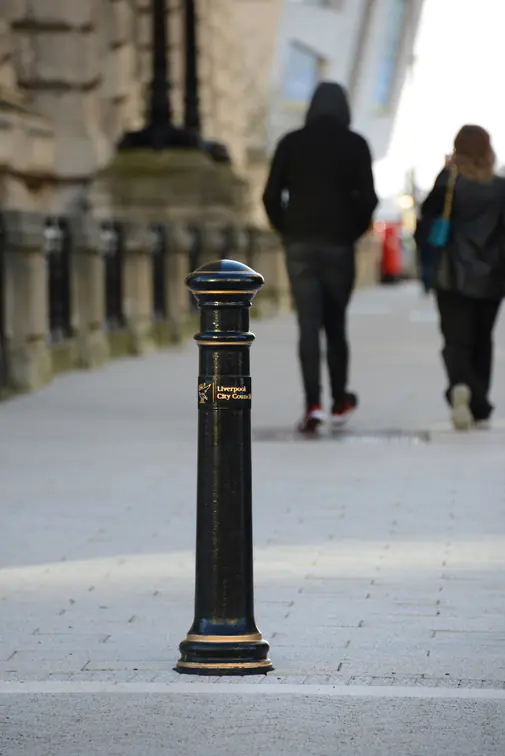

Types of Bollards
Not all bollards are meant to do the same job. Understanding the main categories will help you identify which bollard best fits your project’s purpose, budget, and long-term needs.
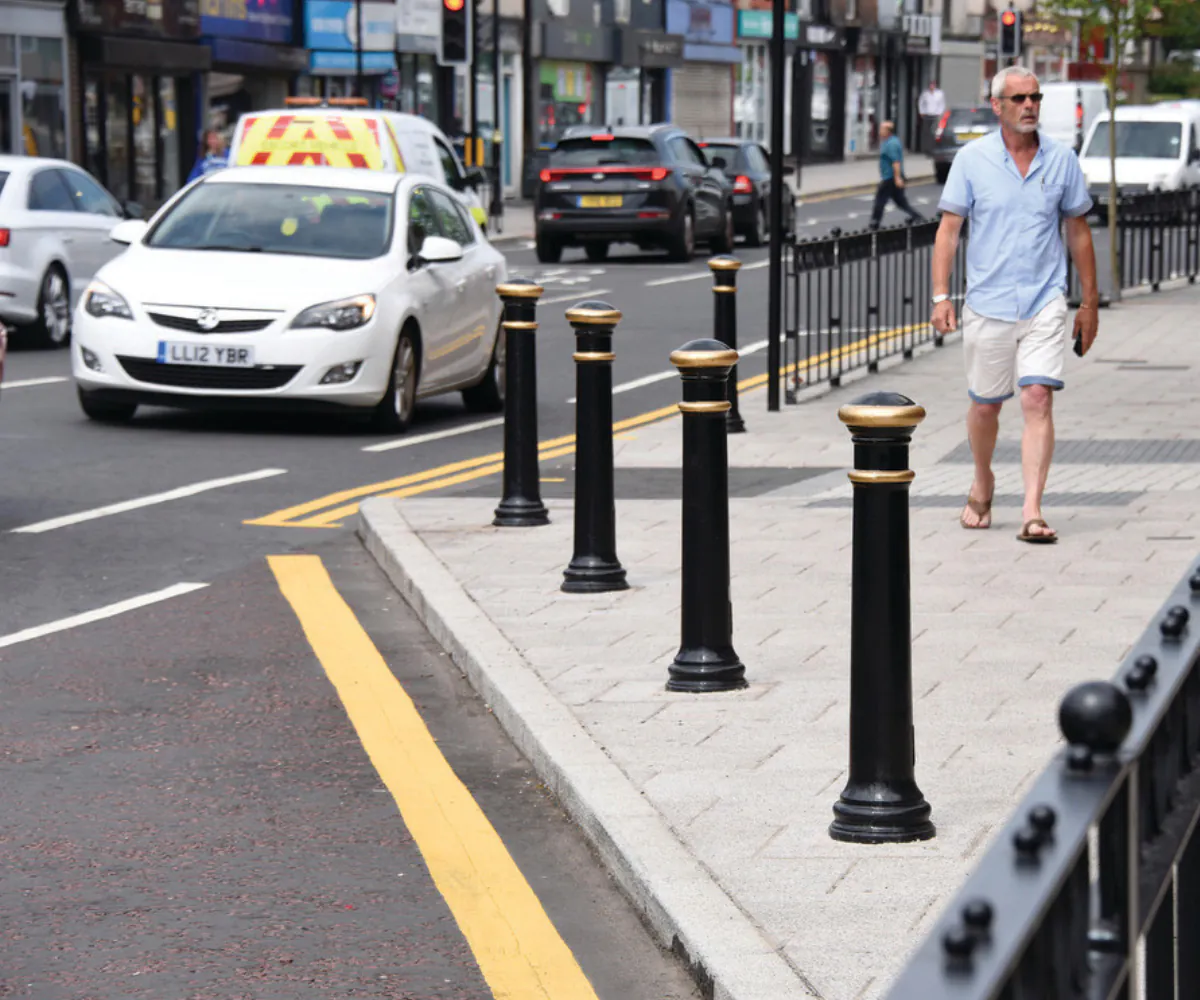

Fixed (Static) Bollards
Fixed bollards are the most common type, permanently installed to provide continuous protection or demarcation. They can be cast in-ground or surface-mounted using base plates for easier installation.
- Best for: Long-term perimeter protection, pedestrian areas, and property frontages
- Advantages: Low maintenance, durable, strong impact resistance
- Considerations: Not suitable where occasional vehicle access is required
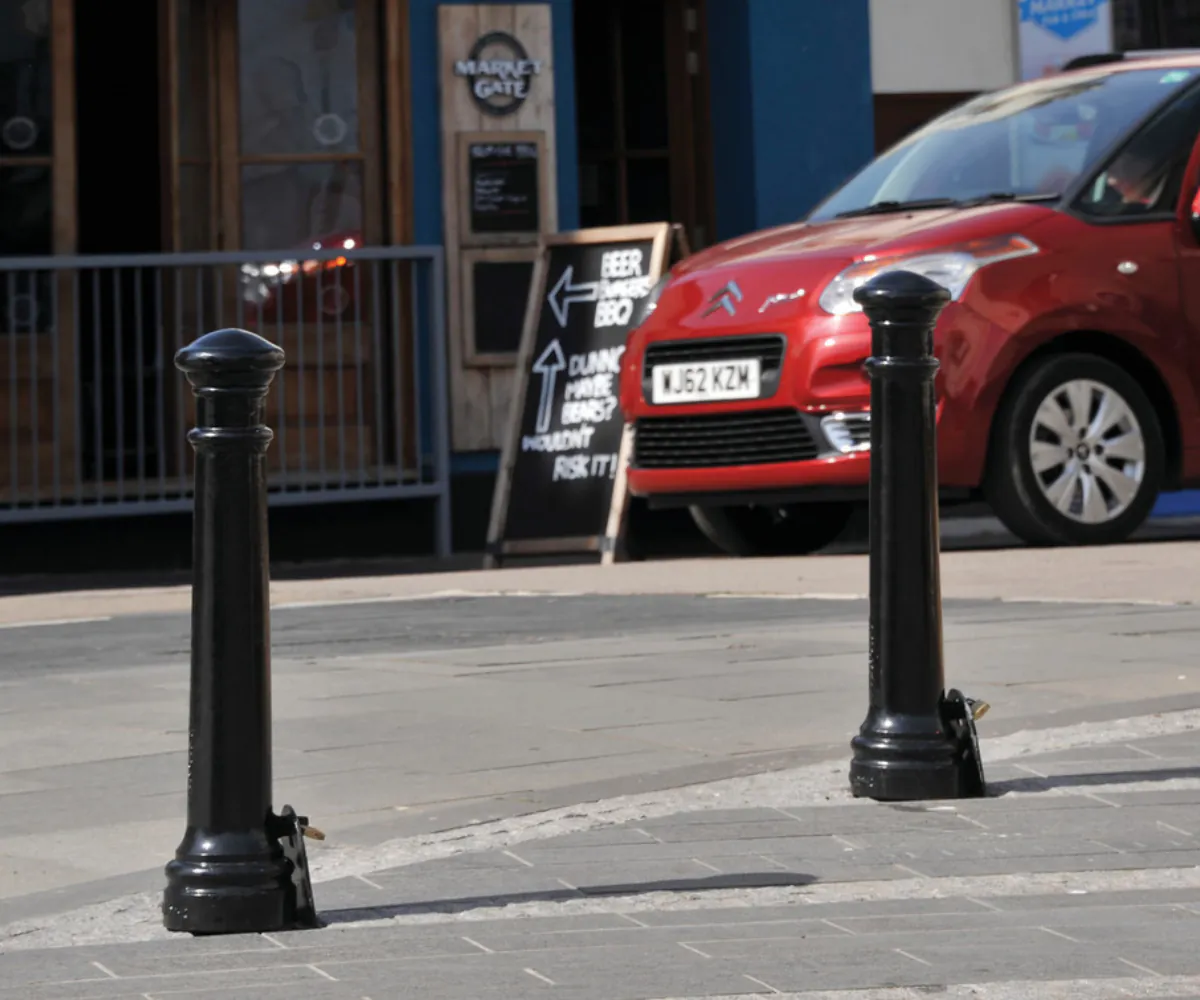

Removable Bollards
Removable bollards provide flexibility where access needs to be controlled from time to time. For example, emergency routes, loading zones, or event spaces. They typically slot into a ground sleeve and lock securely in place.
- Best for: Access control points, mixed-use areas, or temporary restrictions
- Advantages: Easy to remove and reinstall; secure locking systems available
- Considerations: Ground sockets require periodic cleaning and maintenance
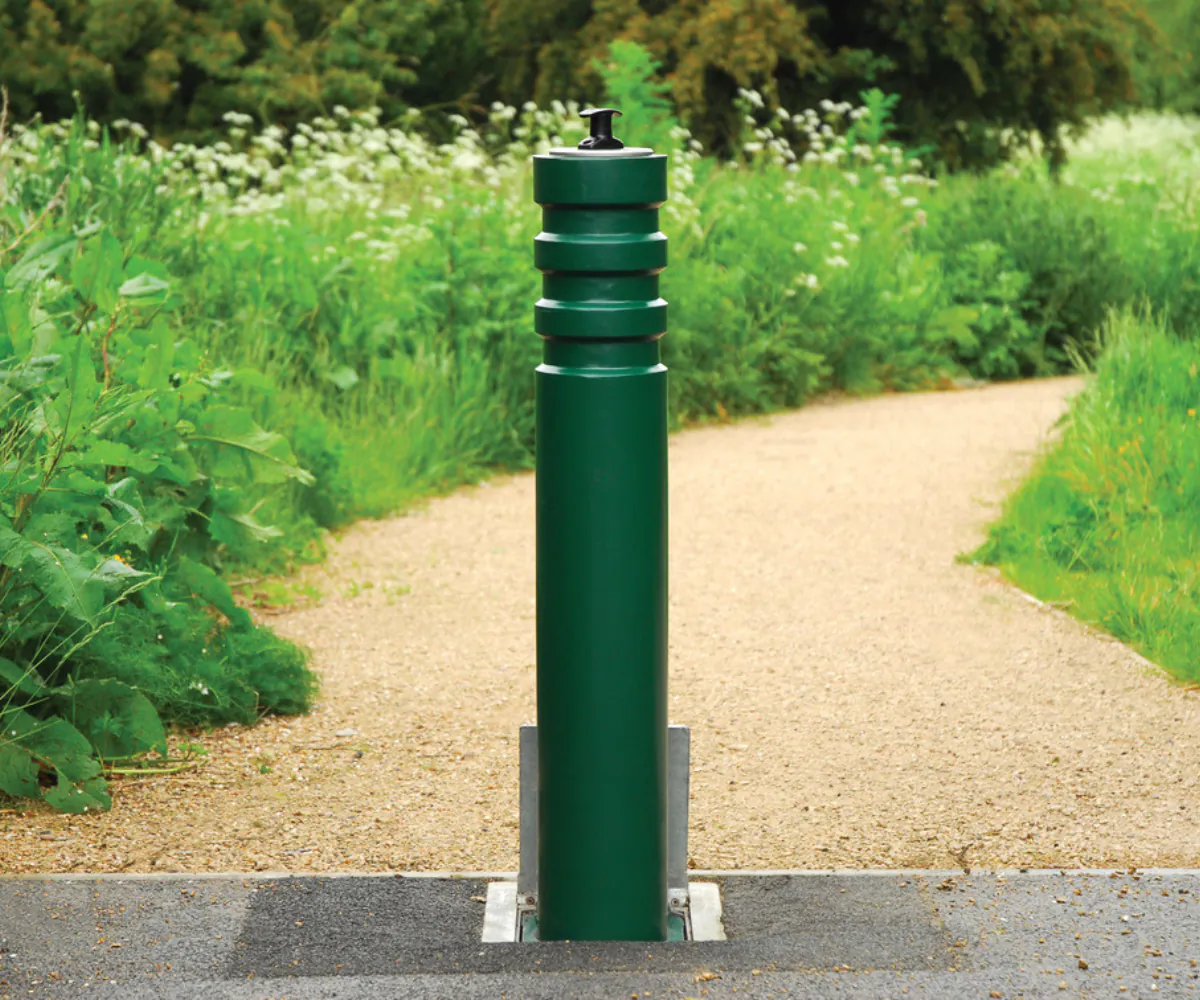

Retractable (Telescopic) Bollards
Retractable bollards can be lowered into the ground when not in use and raised when needed. They offer a practical, space-efficient solution for managing access without cluttering the environment.
- Best for: Driveways, private access roads, and commercial sites
- Advantages: Discreet appearance; flexible access management
- Considerations: Manual systems require lifting; automatic versions need power and servicing
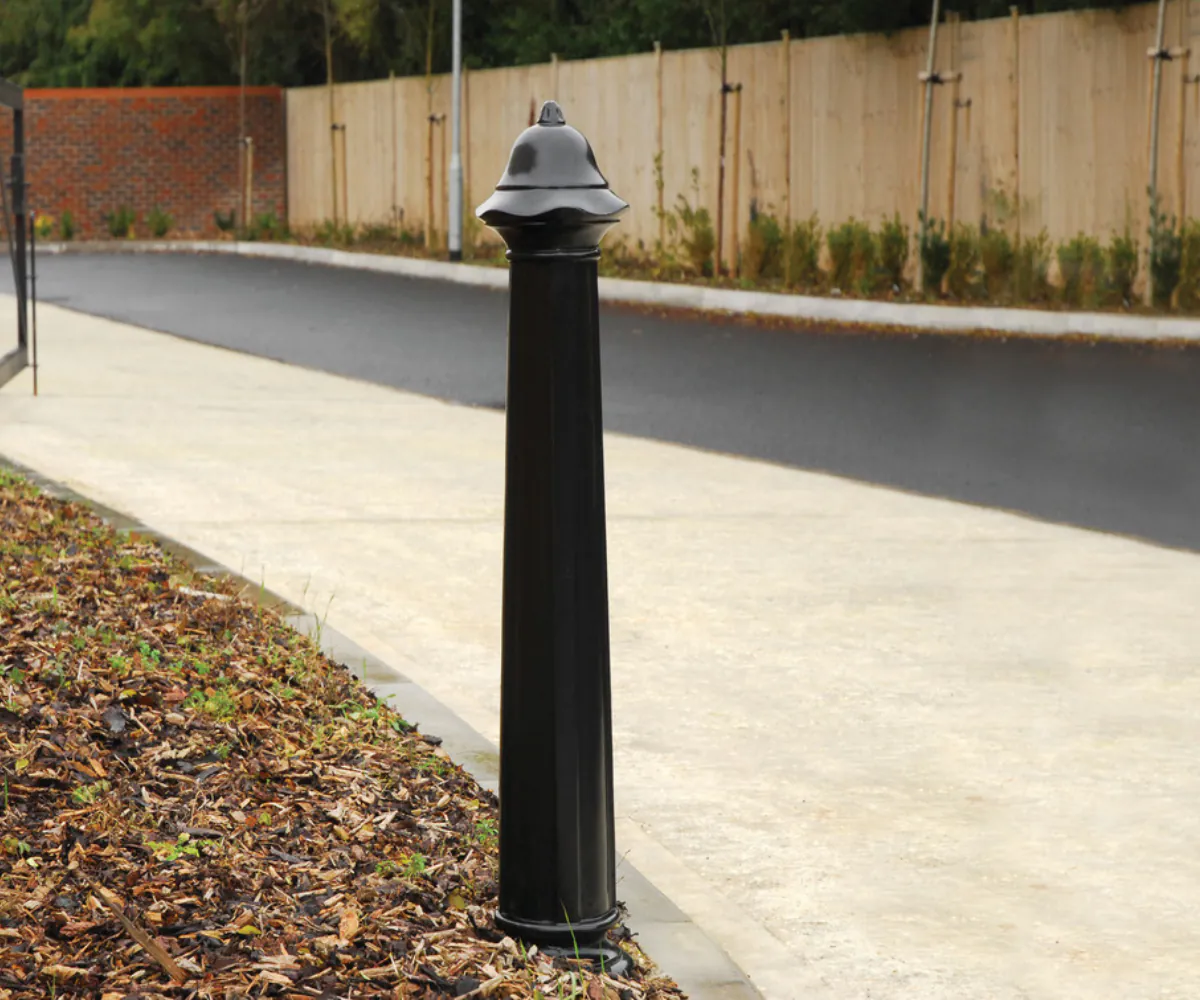

Decorative and Architectural Bollards
These bollards combine form with function, adding a visual element to safety and access control. Available in materials like stainless steel, cast iron, or timber, they can be customised with colours, finishes, or lighting.
- Best for: Urban design projects, public spaces, and commercial developments
- Advantages: Enhances aesthetics and brand identity
- Considerations: Typically less impact-resistant; focus on appearance over strength
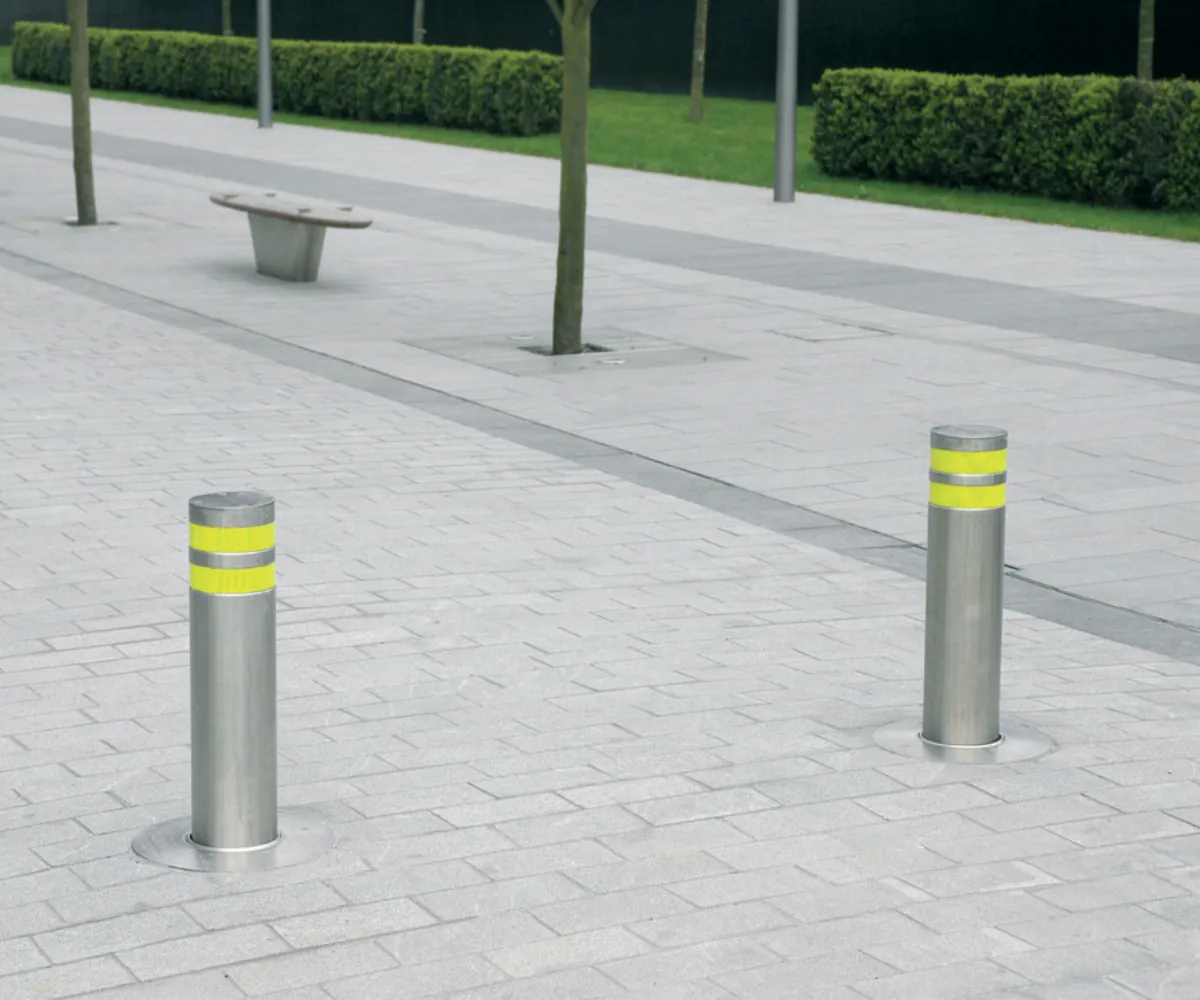

Security and Anti-Ram Bollards
For the highest level of protection, crash-rated bollards are engineered to stop moving vehicles at defined speeds and weights. Tested to standards such as ISO 22343 and PAS 68, they provide proven protection for sensitive or high-risk areas. For more information, see our ISO 22343 comprehensive guide.
- Best for: Government buildings, banks, stadiums, and high-profile venues
- Advantages: Certified impact performance; high deterrence factor
- Considerations: More expensive to specify and install; often requires groundworks
Choosing the Right Material
Steel Bollards
Steel remains one of the most popular materials for general-purpose and security bollards. It’s exceptionally strong and capable of absorbing significant impact forces, making it ideal for both urban and industrial environments.
- Advantages: High strength, versatile, suitable for security applications, easy to customise with coatings or sleeves
- Finish Options: Typically hot-dip galvanised for corrosion protection, then powder-coated for added durability and colour matching
- Best For: Vehicle protection zones, loading bays, and commercial sites
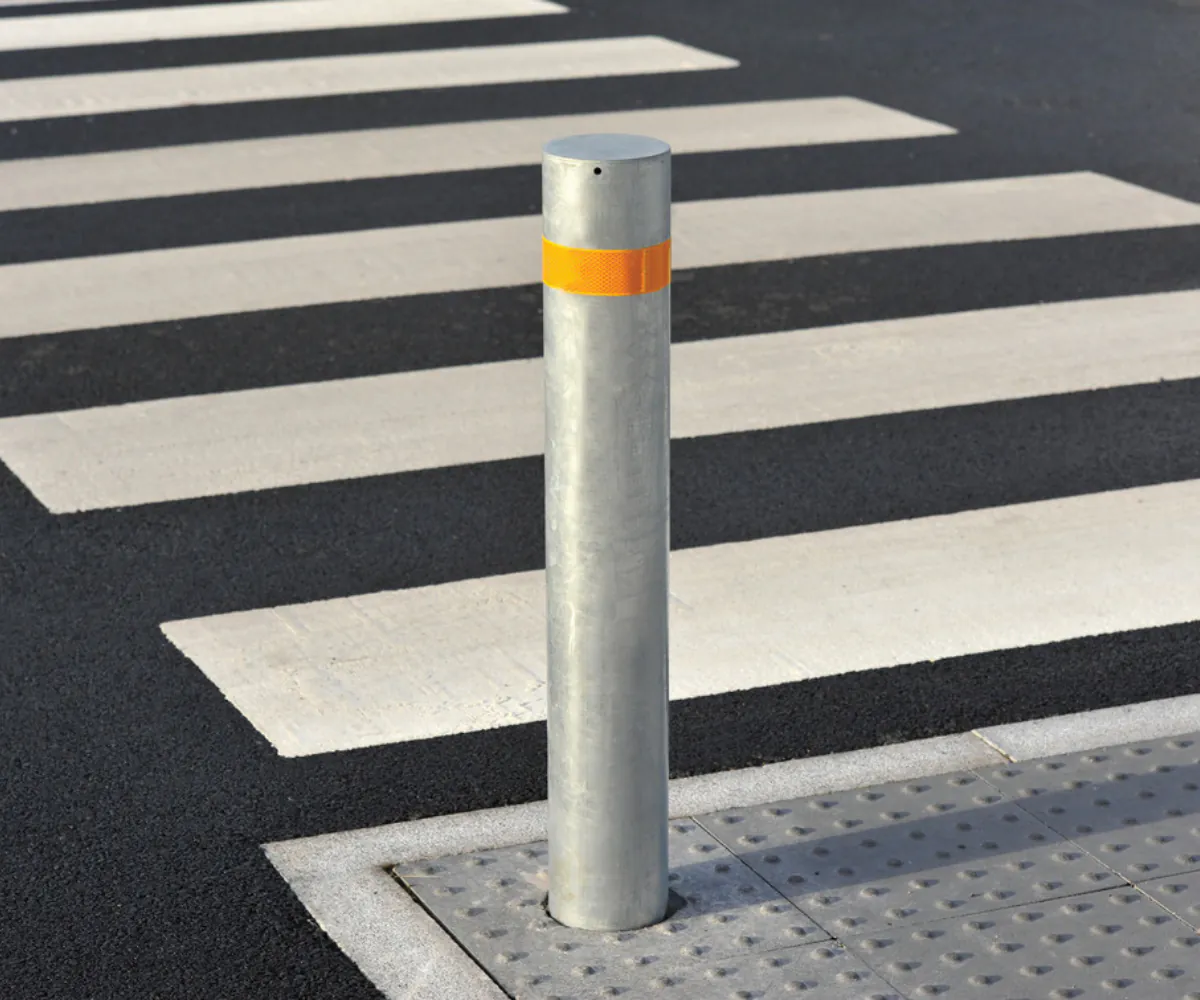

Stainless Steel Bollards
Stainless steel combines strength with a sleek, modern aesthetic. Its natural corrosion resistance makes it a go-to choice for coastal or high-visibility environments where appearance and longevity matter equally.
- Advantages: Corrosion-resistant, minimal maintenance, polished or brushed finish options
- Grades: 304 grade suits general environments; 316 marine-grade offers extra resistance to salt and moisture
- Best For: Coastal developments, architectural landscapes, corporate and retail settings
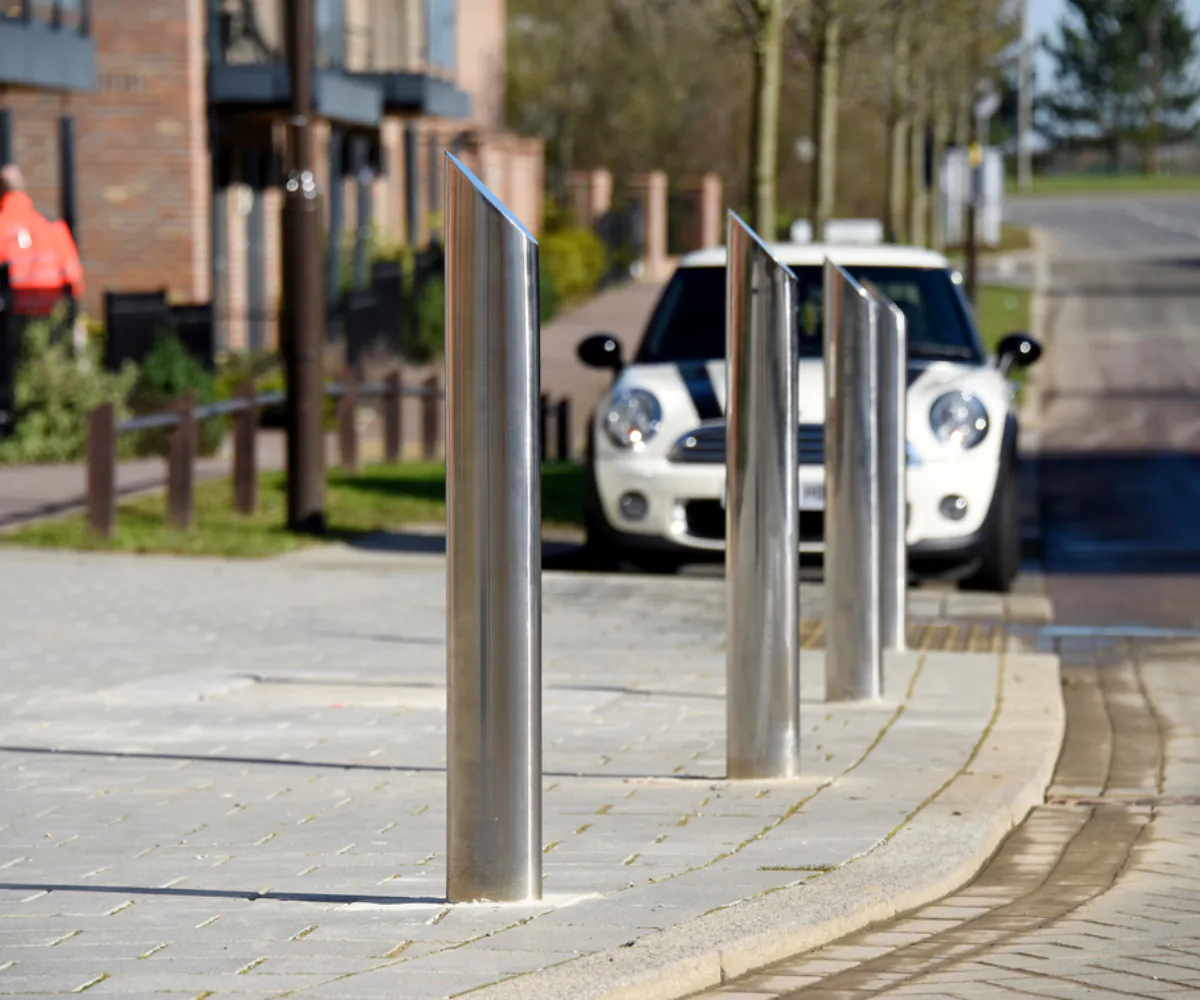

Cast Iron Bollards
Traditional and characterful, cast iron bollards are a staple in heritage and streetscape design. They provide solid physical protection with a timeless appearance that complements period architecture.
- Advantages: Extremely durable, classic aesthetic, heavy and vandal-resistant
- Finish Options: Wet painted for modern durability
- Best For: Town centres, heritage sites, and traditional streetscapes
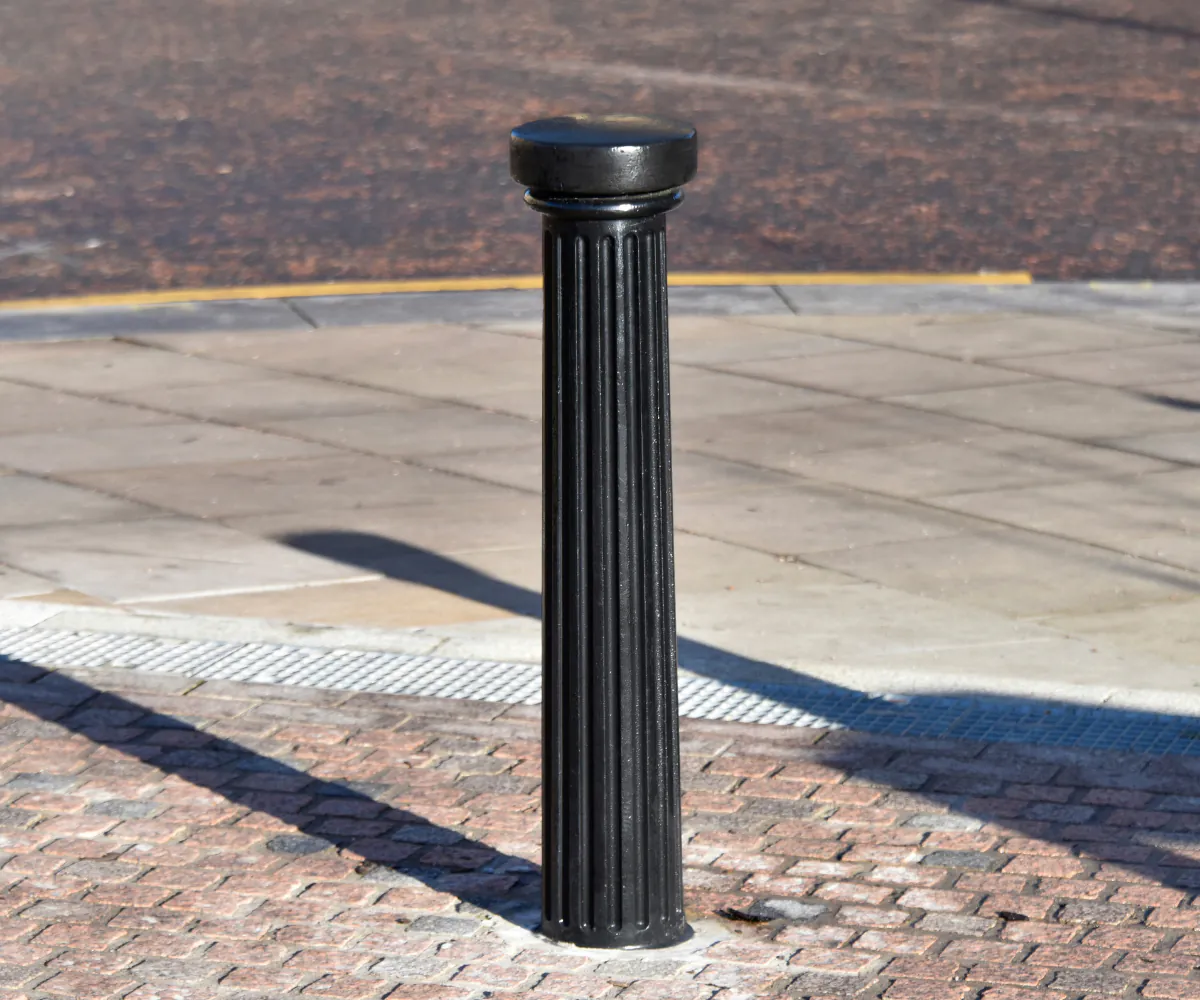

Concrete Bollards
Concrete bollards deliver a combination of mass, permanence, and resilience. They’re often chosen for civic spaces, parks, and public buildings where a solid visual presence is desired alongside durability.
- Advantages: Stable, minimal maintenance, wide design flexibility (textures, aggregates, shapes)
- Best For: Public spaces, government buildings, and campuses
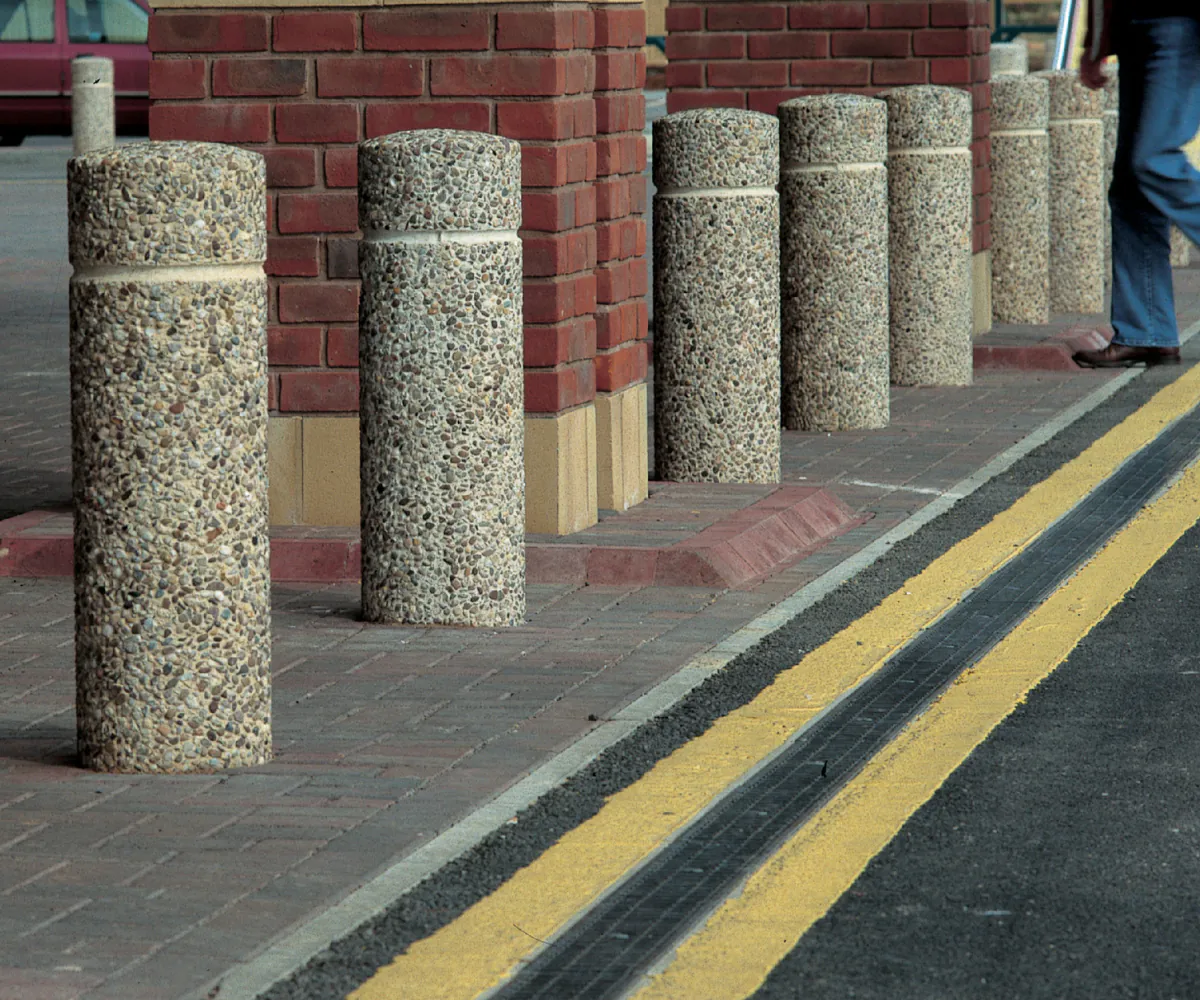

Polyurethane (PU) Bollards
Polyurethane bollards offer flexibility and toughness in equal measure. They are lightweight, versatile, and practical, offering flexibility in both use and design.
- Advantages: Flexible, lightweight, corrosion-free, available in bright colours and reflective finishes
- Best For: Car parks, distribution centres, and areas prone to minor collisions
- Considerations: Not designed for high-security or anti-ram use; may fade slightly over long UV exposure
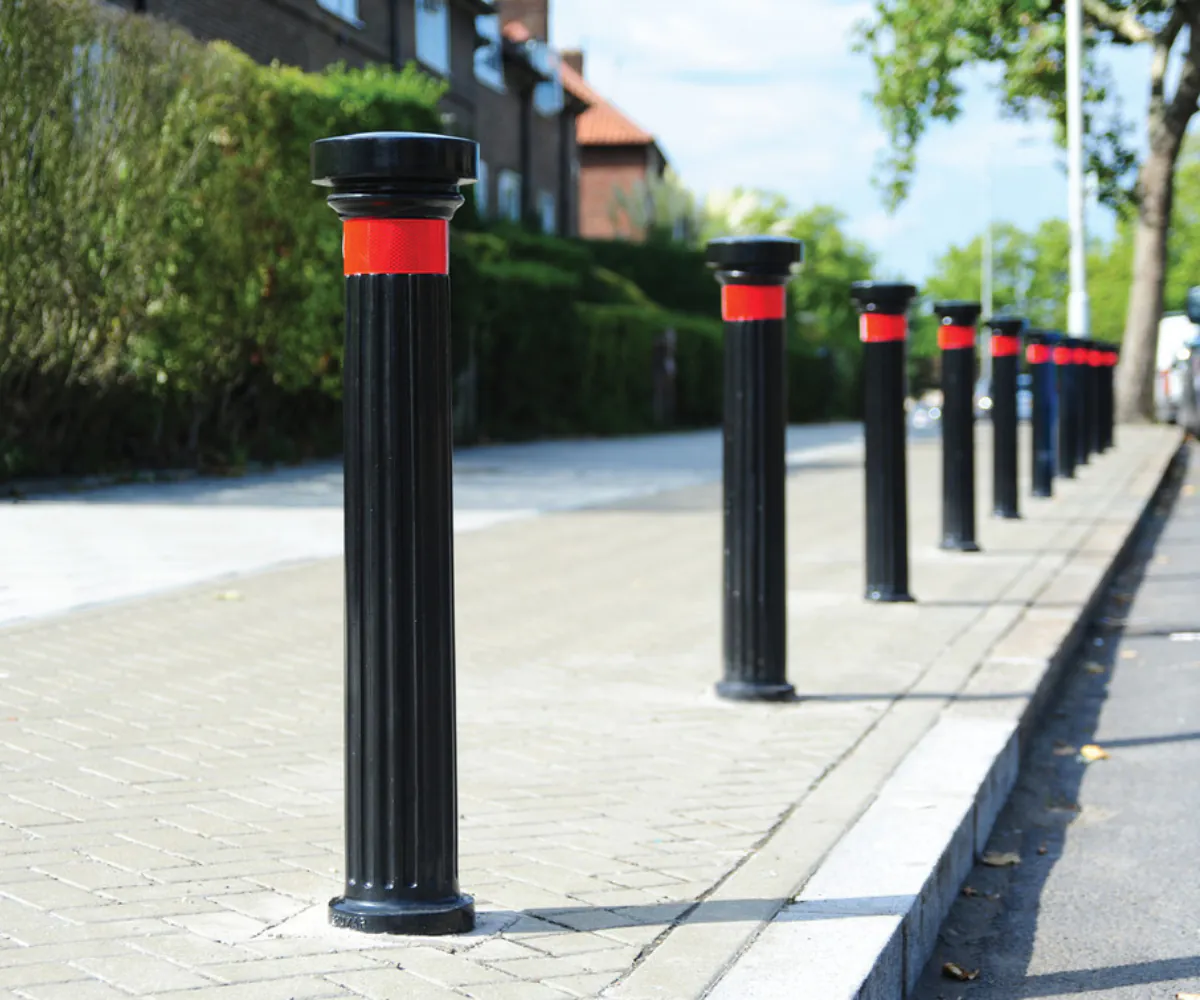

Recycled Plastic Bollards
Made from post-consumer or post-industrial plastics, these bollards are a sustainable, low-maintenance alternative to traditional materials. They perform well in both functional and decorative applications while reducing environmental impact.
- Advantages: Sustainable, resistant to rot, rust, and corrosion, minimal maintenance
- Best For: Parks, pathways, schools, and eco-conscious developments
- Considerations: Less rigid than steel or concrete; limited colour and finish options
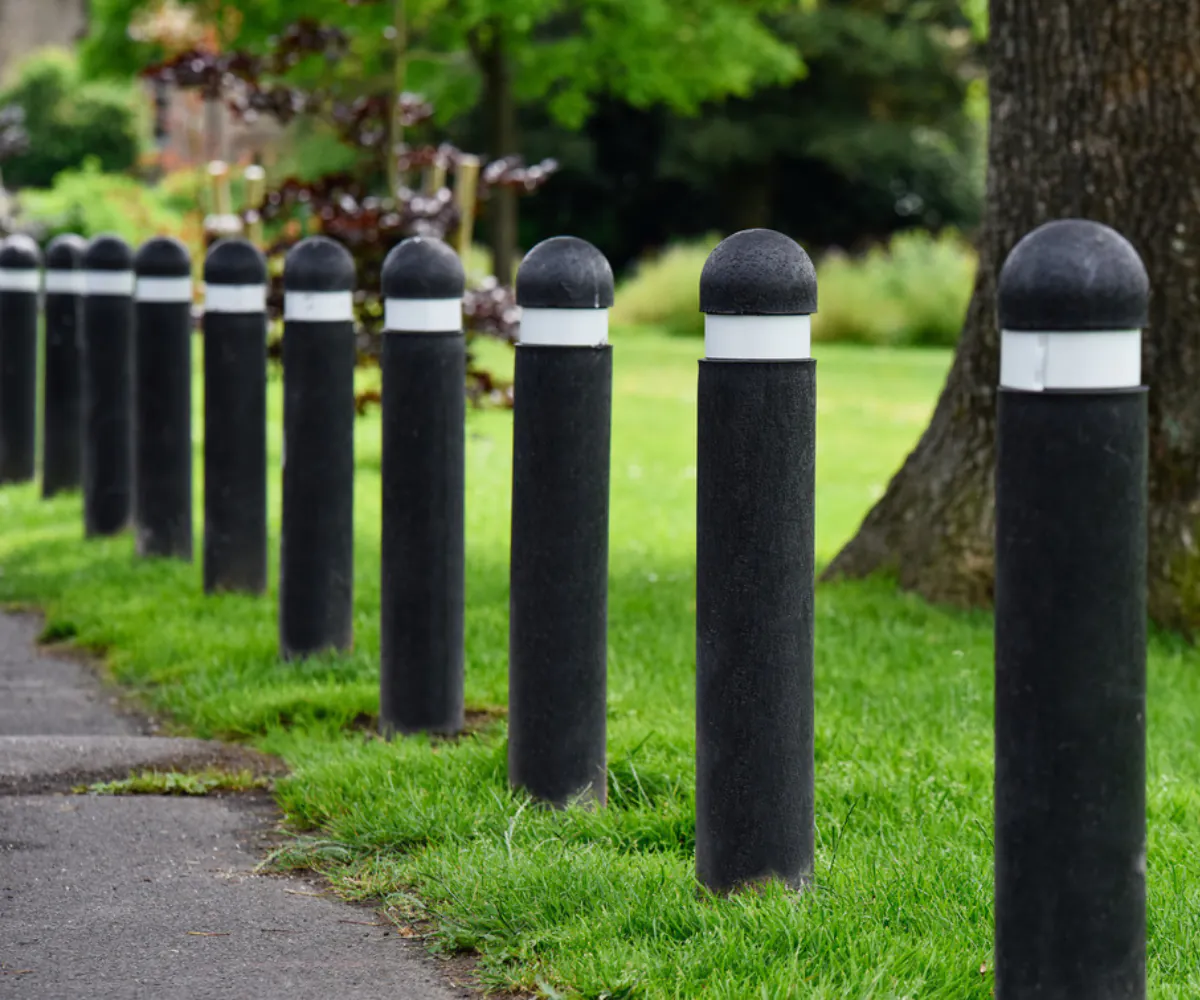

Timber Bollards
Timber brings a natural, organic quality to a space. When properly treated, it offers long service life and a warm aesthetic that other materials can’t easily replicate.
- Advantages: Natural appearance, sustainable sourcing options, renewable material
- Best For: Parks, trails, heritage areas, and low-traffic zones
- Considerations: Requires periodic treatment to prevent rot or insect damage; not suitable for high-impact areas.
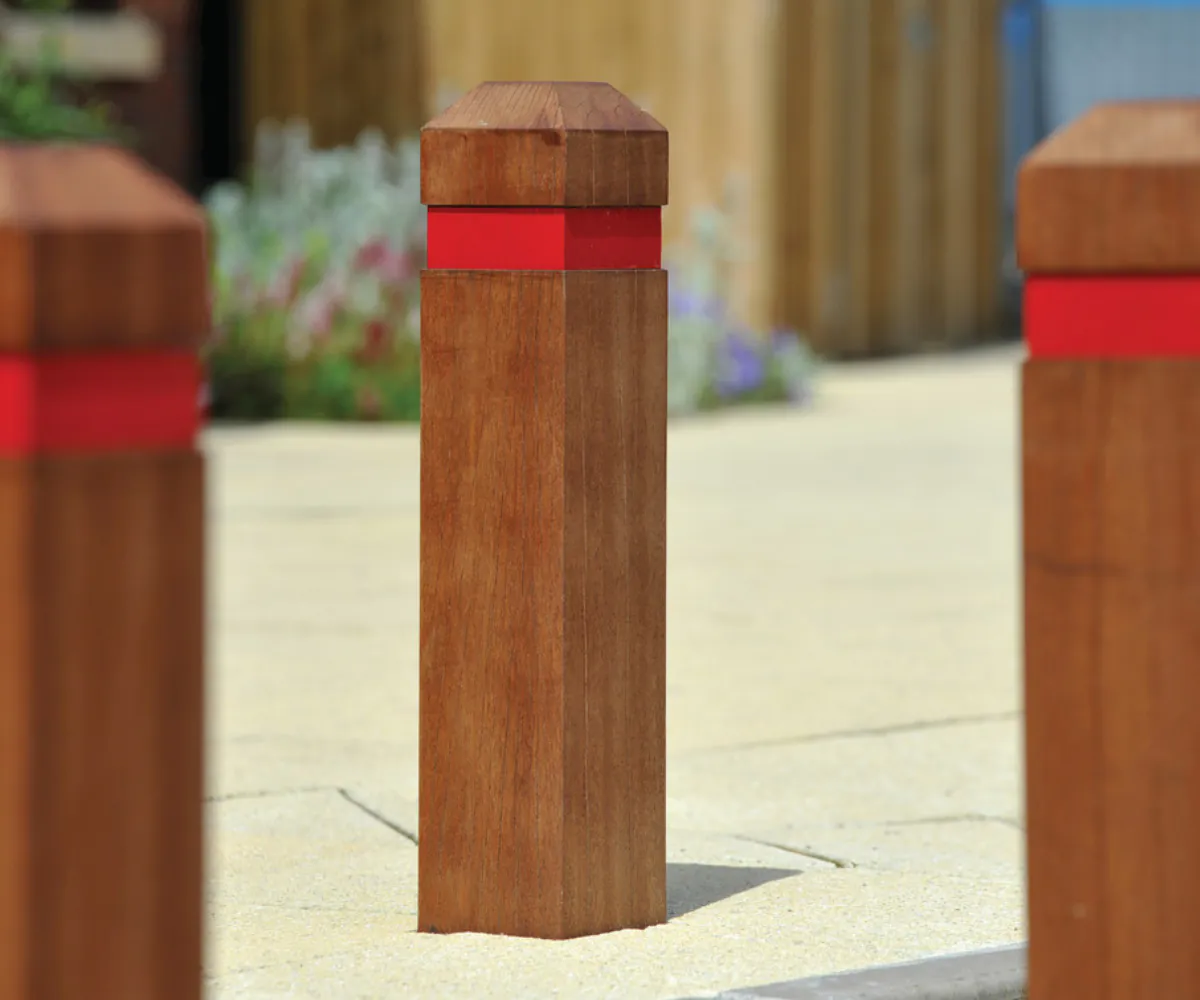

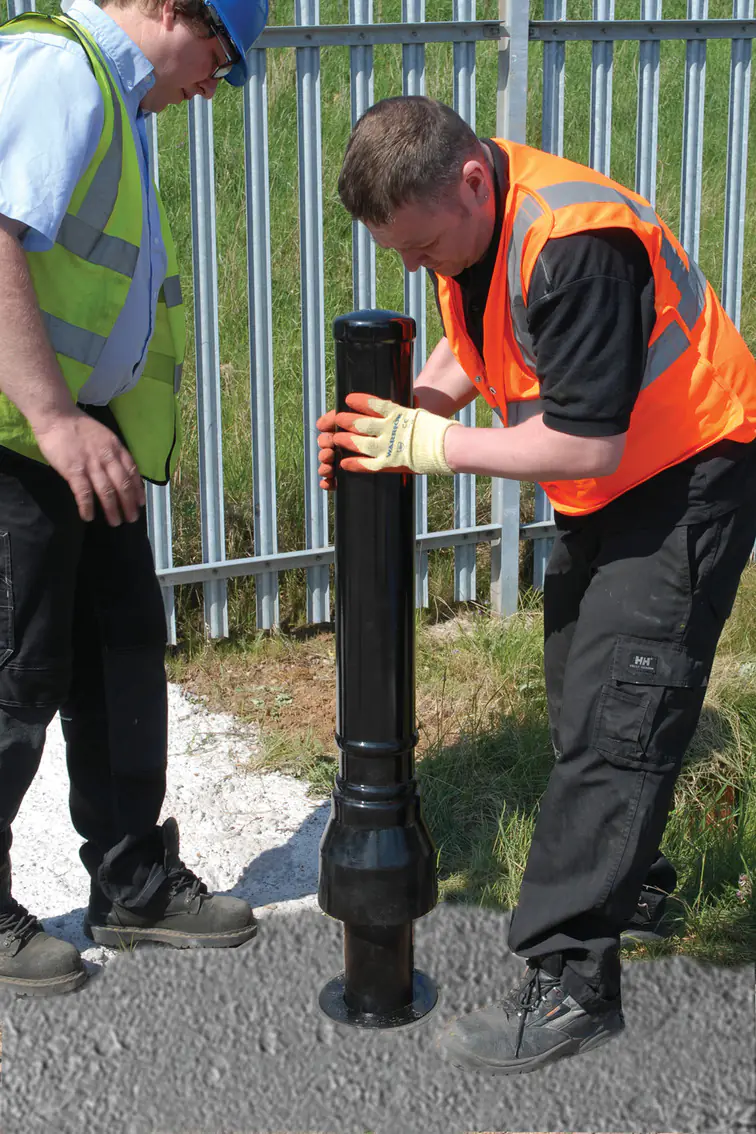

Installation Methods
Surface-mounted bollards are attached to an existing paved or concrete surface using a base plate and bolts. This method is quick and straightforward, requiring minimal disruption to the surrounding area, and it also makes removal or replacement relatively simple.
Surface-mounted bollards are ideal in some sites, although they typically require a strong, level surface to ensure stability and may appear less integrated than bollards set into the ground.
Cast-in bollards, often called root-fixed bollards, are set directly into a concrete foundation. This creates a stable, long-lasting installation with a clean, flush-finished look that blends seamlessly with its surroundings.
Cast-in bollards are particularly well-suited to heavily trafficked areas, public spaces, streetscapes, and civic projects. The main consideration with this method is that installation is more time-consuming, and the bollard’s placement is permanent, making relocation difficult.
Removable bollards provide flexibility for sites where vehicle access needs to vary over time. They typically slot into a ground sleeve or socket and can be locked securely to prevent unauthorised removal.
This method is useful for emergency access points, shared-use areas, and spaces used for temporary events. Removable bollards require occasional maintenance to keep them clean and functional, but they offer the advantage of adaptability without major construction work.
Retractable or telescopic bollards can be lowered into the ground either manually or automatically, creating a smooth, obstruction-free surface when not in use. This method offers a sleek, space-saving design while allowing controlled vehicle access.
Retractable bollards can be integrated with access control or security systems, making them ideal for private roads, driveways, and commercial entrances.
Design and Aesthetic Considerations
Bollards do more than provide safety or access control; they also contribute to the look and feel of a space. The shape, material, and finish can either blend seamlessly with the environment or become a deliberate design feature. Choosing the right style means considering the surrounding architecture, street furniture, and landscape. Reflective bands, colour choices, or subtle branding can enhance visibility and tie the bollards into the overall design scheme. Even small details, like rounded edges or decorative tops, can elevate the visual impact while maintaining functionality.
Regulatory Considerations for Bollard Installation
The UK Department for Transport provides comprehensive recommendations for bollard placement.
Bollard Spacing
To maintain pedestrian flow and safety, bollards should be spaced with an air gap of no more than 1,200mm. This spacing allows for adequate movement while still providing the necessary security measures.
Pedestrian Movement Impact
Studies have shown that, under normal conditions, bollards with the recommended spacing have a minimal impact on pedestrian movement. The primary effects observed include slight adjustments in body position or a brief reduction in walking speed. These impacts are generally less significant than those caused by other common urban features, such as retail kiosks or mobile vendors.
Design Considerations
While security is paramount, it's crucial to balance it with pedestrian convenience and comfort. Designers should consider factors like route capacity, comfort levels, and convenience to ensure that bollard installations do not impede pedestrian movement more than necessary.
For detailed guidance and further information, refer to the full Traffic Advisory Leaflet 02/13 available on the UK Government's website.




The History of Bollards
Bollards have a fascinating history, evolving from practical maritime tools into the versatile street furniture we see today. The term “bollard” originally comes from nautical language, referring to the sturdy posts on ships used to secure ropes. In this early maritime context, bollards were essential for tying up vessels safely along docks and quaysides, providing a simple but effective barrier against accidental collisions. Many of these early bollards were made of timber or cast iron, and some historic examples can still be found in port towns, preserved as part of the UK’s industrial heritage.
A particularly interesting chapter in bollard history involves decommissioned naval cannons. During the 18th and 19th centuries, when the Royal Navy upgraded its artillery, old cannons were often repurposed as street furniture. These heavy iron or bronze pieces were embedded vertically into pavements and quaysides, serving as early bollards to protect pedestrians, carriages, and buildings from traffic. Known as “cannon bollards,” they reflected Britain’s naval strength while providing durable, effective barriers.
By the late 19th and early 20th centuries, bollards began to move beyond the docks and ports into urban streets. Initially, they were used to prevent horse-drawn carriages from mounting pavements and to safeguard pedestrians. Cast iron bollards, often featuring decorative tops or fluted designs, became commonplace in towns and cities, blending safety with architectural style.
Throughout the 20th century, bollards became essential for traffic control, protecting storefronts, creating pedestrian zones, and organising public spaces. More recently, modern bollards have combined functionality with aesthetics, sustainability, and security, made from materials like stainless steel, concrete, polyurethane, and recycled plastics.
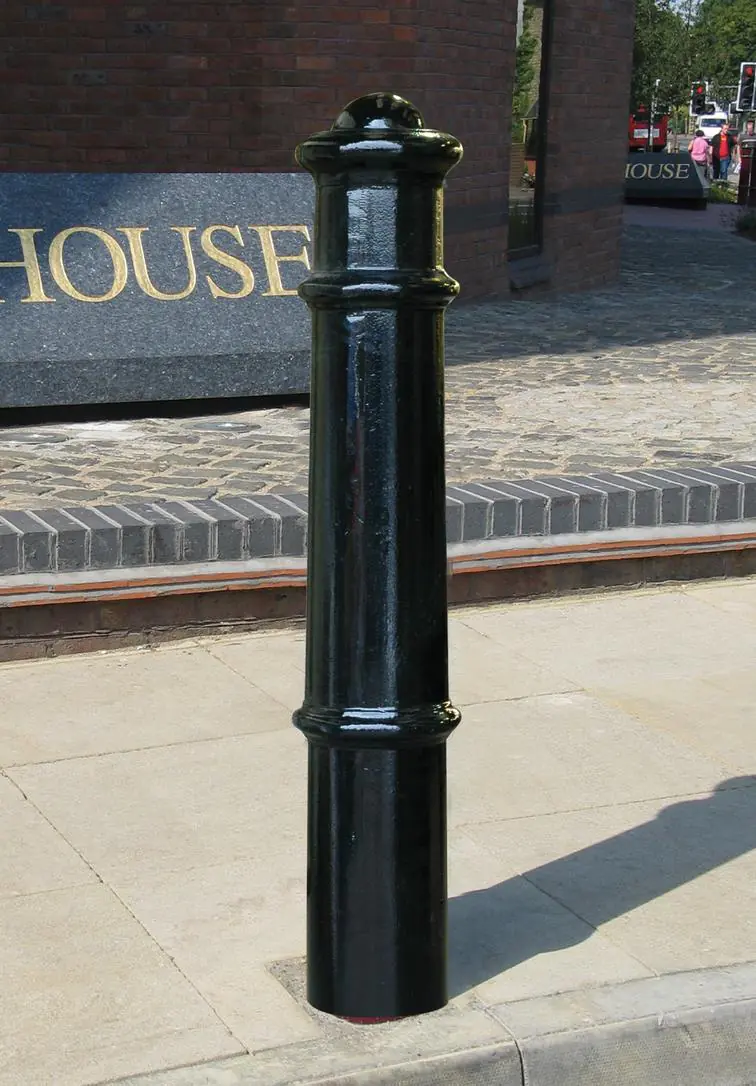

Lessons Learned from Real-world Practices
The effectiveness of bollards depends on careful consideration of design, material, placement, and installation. Across urban streets, public spaces, and commercial sites, successful projects share a few consistent lessons.
Real-world practice shows that successful bollard installations balance function, aesthetics, and context. By learning from these experiences, buyers can make informed decisions that ensure their bollards perform reliably, enhance the environment, and stand the test of time.
FAQs
Bollards are designed to provide safety, control access, guide traffic, and enhance the aesthetics of a space. Depending on the type and material, they can protect pedestrians, vehicles, buildings, or public spaces while contributing to the overall design of the environment.
Bollards can be made from steel, stainless steel, cast iron, concrete, polyurethane, recycled plastic, or timber. The choice depends on factors like aesthetic goals, maintenance requirements, durability, and environmental conditions. Steel and stainless steel offer modern looks and low maintenance, concrete and cast iron provide permanence, while timber, PU, and recycled plastics offer visual warmth, flexibility, or sustainability.
Absolutely. Many of our bollards can be powder-coated, painted, or finished to match colours, materials, or branding. Decorative tops, reflective bands, and integrated lighting can also enhance visibility and style while maintaining function.
Installation is crucial to ensure stability, durability, and safety. While some surface-mounted or small bollards can be installed in-house, professional installation is recommended for cast-in, removable, or retractable systems, as well as high-traffic or public spaces. Professionals ensure correct positioning, anchoring, and compliance with standards.
Maintenance depends on material and environment. Steel or cast iron may need occasional painting or coating, stainless requires regular polishing, and plastics or PU generally need minimal upkeep. Regular inspection ensures safety, visibility, and longevity.
If your space requires occasional vehicle access, such as emergency routes, loading zones, or event areas, removable or retractable bollards offer flexibility without compromising safety. For permanent traffic control, fixed bollards are usually more appropriate.
Yes. Recycled plastic bollards and sustainably sourced timber offer low-maintenance, eco-conscious alternatives. Selecting long-lasting materials also reduces replacement needs, supporting overall sustainability goals.
